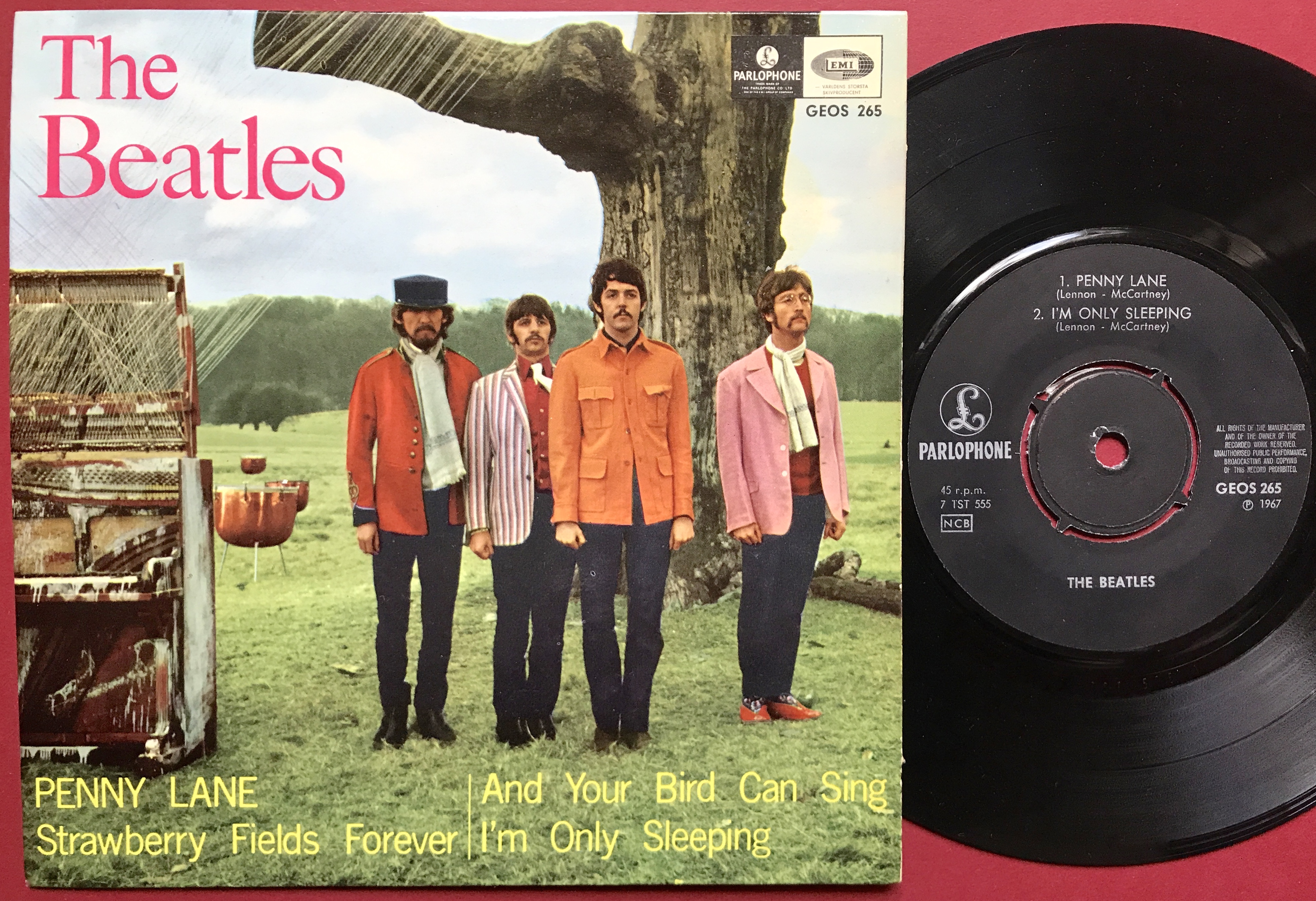Written by: Lennon-McCartney
Recorded: 29, 30 December 1966, 4, 5, 6, 9, 10, 12, 17 January 1967
Producer: George Martin
Engineer: Geoff Emerick
Released: 17 February 1967 (UK), 13 February 1967 (US)
Available on:
Sgt Pepper’s Lonely Hearts Club Band (Special Collector’s Anniversary Edition)
Magical Mystery Tour
1
Anthology 2
Personnel
Paul McCartney: vocals, piano, bass guitar, harmonium, handclaps
John Lennon: backing vocals, electric guitar, acoustic guitar, piano, handclaps
George Harrison: backing vocals, guitar, handclaps
Ringo Starr: drums, tubular bells, tambourine
Ray Swinfield, P Goody, Manny Winters, Dennis Walton: flutes, piccolos
David Mason, Leon Calvert, Freddy Clayton, Bert Courtley, Duncan Campbell: trumpets, flugelhorn
Dick Morgan, Mike Winfield: oboes, cor anglais
Frank Clarke: double bass

About the Song
Penny Lane: A Nostalgic Journey through Liverpool
In the vibrant tapestry of The Beatles’ musical repertoire, “Penny Lane” stands out as a nostalgic ode to the band’s hometown, Liverpool. Penned primarily by Paul McCartney, with contributions from John Lennon, this 1967 masterpiece paints a vivid picture of Penny Lane, a bustling thoroughfare in the city’s Allerton neighborhood.
From the outset, the song’s opening piano chords and McCartney’s gentle vocals evoke a sense of tranquility, transporting listeners to a time of youthful innocence and carefree days. As the melody unfolds, the lyrics delve into a kaleidoscope of familiar sights and sounds that define Penny Lane’s unique character.
“Penny Lane,” with its distinctive Baroque pop and psychedelic flourishes, is a testament to The Beatles’ boundless creativity. The song’s arrangement, masterfully crafted by producer George Martin, seamlessly blends a variety of musical elements, including brass instruments, a piccolo trumpet, and even a bicycle bell, creating a whimsical and enchanting soundscape.
The lyrics, infused with McCartney’s signature wordplay and imagery, paint a nostalgic portrait of Penny Lane’s vibrant atmosphere. We encounter a cast of characters, from the barber shaving heads to the banker counting money, each contributing to the bustling energy of the street. The imagery is further enriched by references to local landmarks, such as the bus shelter, the fireman’s band, and the tram shelter, creating a sense of intimacy and connection with the place.
“Penny Lane” is more than just a song about a street; it’s a celebration of the human spirit and the power of memory. It reminds us that even the most ordinary places can hold extraordinary significance, shaping our lives in ways we may never fully understand. The song’s enduring appeal lies in its ability to evoke a sense of nostalgia and longing, transporting listeners back to a time of simpler pleasures and carefree moments.
As the final notes of “Penny Lane” fade away, we are left with a lingering sense of warmth and affection for this iconic street and the memories it evokes. It is a testament to The Beatles’ musical genius that they could capture the essence of a place and its inhabitants with such poetic beauty and enduring charm.